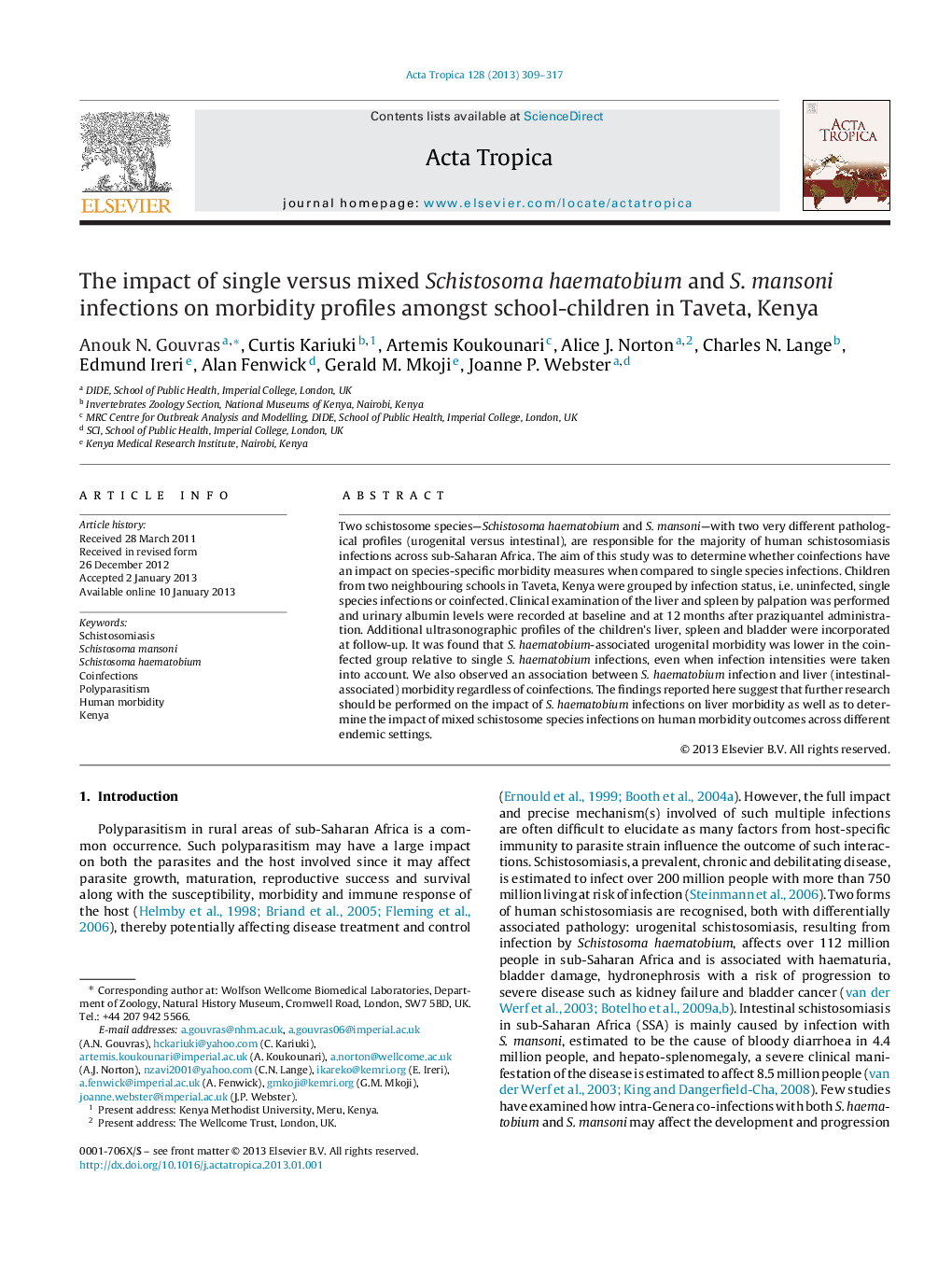| Article ID | Journal | Published Year | Pages | File Type |
|---|---|---|---|---|
| 3393876 | Acta Tropica | 2013 | 9 Pages |
Two schistosome species—Schistosoma haematobium and S. mansoni—with two very different pathological profiles (urogenital versus intestinal), are responsible for the majority of human schistosomiasis infections across sub-Saharan Africa. The aim of this study was to determine whether coinfections have an impact on species-specific morbidity measures when compared to single species infections. Children from two neighbouring schools in Taveta, Kenya were grouped by infection status, i.e. uninfected, single species infections or coinfected. Clinical examination of the liver and spleen by palpation was performed and urinary albumin levels were recorded at baseline and at 12 months after praziquantel administration. Additional ultrasonographic profiles of the children's liver, spleen and bladder were incorporated at follow-up. It was found that S. haematobium-associated urogenital morbidity was lower in the coinfected group relative to single S. haematobium infections, even when infection intensities were taken into account. We also observed an association between S. haematobium infection and liver (intestinal-associated) morbidity regardless of coinfections. The findings reported here suggest that further research should be performed on the impact of S. haematobium infections on liver morbidity as well as to determine the impact of mixed schistosome species infections on human morbidity outcomes across different endemic settings.
Graphical abstractFigure optionsDownload full-size imageDownload as PowerPoint slideHighlights► Urinary schistosomiasis was lower in coinfections relative to single infections. ► Inter-specific interactions in coinfections impact urinary schistosomiasis in Taveta. ► An association between S. haematobium infections with liver morbidity was observed. ► Control programmes should use two or more species-specific morbidity indicators. ► Control programmes should monitor the impact of S. haematobium on liver morbidity.
